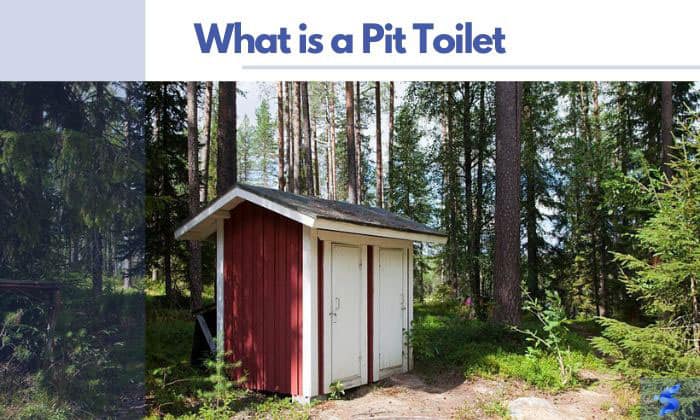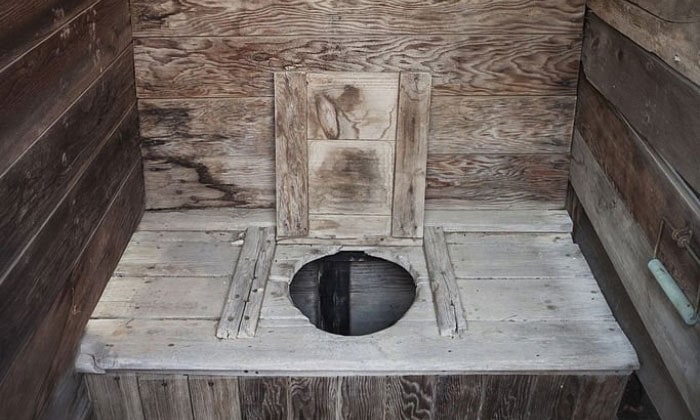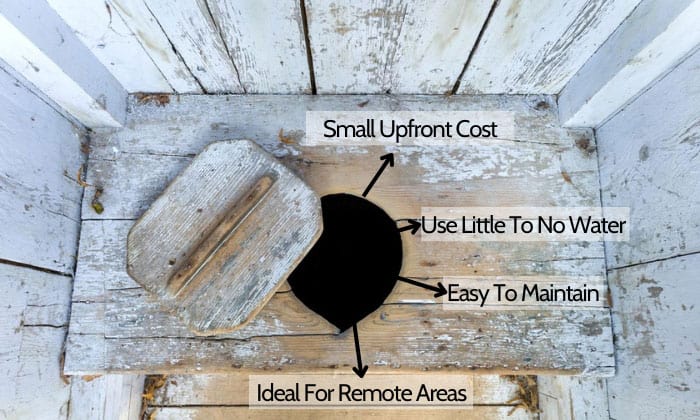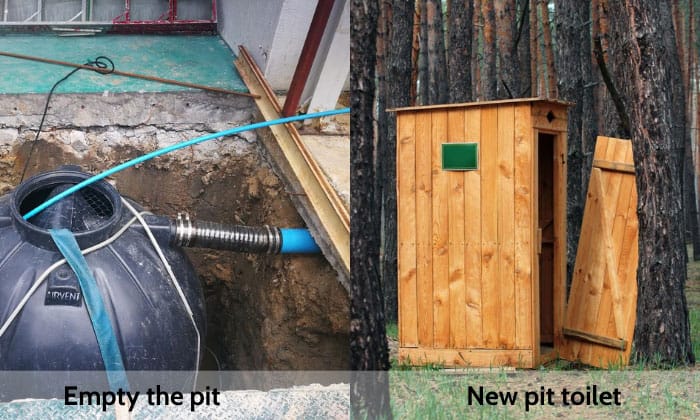Table of Contents
I’ve seen many pit toilets in campgrounds and instantly became interested in their function. They look a bit shabby, but they provide more privacy than open defecating. So, what is a pit toilet anyway?
A pit toilet is a type of toilet that allows you to do your business directly through a hole in the ground. Ultilizing these toilets in remote areas is more convenient because it doesn’t need a water supply connection.
Let’s discuss pit toilets more below.
Overview of Pit Latrines
Also known as pit toilets or long drops, pit-latrines are convenient for collecting liquid and solid waste in a remote area without contaminating the environment.
Typically, the construction only includes a hole underground and a seat or squatting pan for great ease of use. To enhance privacy, most outhouse pit structures build a shelter all around it or install a light to see in the dark.
The design of the hole in the ground toilet can be vented, unvented, reinforced, or unlined, depending on the type. Here are the different types of pit latrines.
- Dry Pit Toilets: This type is a perfect pit toilet camping option because it’s easy to make and saves space. You simply need to dig a hole and a shelter for cover. Unlike other pit toilets, a dry version doesn’t need any water source for flushing.
- Pour-Flush Pit Latrines: If you prefer to minimize odors, a pour-flush pit latrine can be built in your garden shed or outhouse. This type of pit toilet uses water for flushing like a regular cistern flush toilet. However, you need to pour a bucket of water manually, which can save you less water in the long run.
- Unventilated Pit Toilets: This variation is a simple structure without ventilation. Though easy and quick to make, this type can attract flies due to odor problems.
- Ventilated Improved Pit (VIP) Toilets: These VIP toilets are built with a long vent pipe straight above the roof to improve airflow. The vent pushes the smelly air out of the pit toilet. As a result, it solves the problem of odor and insects, especially when placed with a screen at the top of the pipe.
How Do Pit Toilets Work?
Pit toilets operate on a simple principle. Instead of a toilet bowl, they have a hole in the ground to store human waste. Here are the key components of a pit toilet:
- Hole: The hole on the ground is the critical component of a pit toilet serving as the container for human excrement and urine. It’s about 10 meters deep and not larger than 0.25 meters across. Keep the hole away from water sources to prevent contamination.
- Concrete Or Wooden Slab: This part is the platform where you squat when using the toilet. It has a tiny hole in the center, enough for the waste to pass through smoothly. Some pit toilets are equipped with a tight-fitting lid to minimize odors.
- Shelter: This component houses the ground hole, providing privacy for users. Each time you do your business, something covers you up. You can use any local materials which are available to make the shelter.
In some pit toilets, a vent pipe may be included to improve airflow and reduce the odor. The vent pipe releases the bad air from the pit and lets the fresh air in. It often consists of a mesh to prevent flies from entering the shelter and trapping those already inside, which eventually inside the pit.
Overtime, with the help of bacteria and earthworms, the sludge of fecal matter decomposes into nutrient-rich soil. It might take a long time, though, so consider proper disposal when the latrine is full.
Advantages and Disadvantages of Pit Toilets
Although many toilets are way better than pit toilets, their simplicity is still attractive to people, especially those who love the outdoors. Here are the advantages of pit toilets.
- Small Upfront Cost: Compared to other types of toilets, you only have to shell out a few bucks to make a pit toilet. You only need a few construction materials to make the shelter, like a few logs and wood panels. You don’t need to buy a cistern toilet because a hole is enough.
- Use Little To No Water: A bucket of water is all you need for flushing or even none at all with a dry pit toilet variant. This means more savings in water costs.
- Easy To Maintain: Since the waste goes down into a deep hole, you only need to monitor when it’s going to fill up. Other than that, you’re free of cleaning a toilet bowl because you only have a concrete slab with a hole straight to the ground.
- Ideal For Remote Areas: If you’re in an area with limited water sources, then you’ll appreciate the pit toilet. This type doesn’t need a water supply hook-up, making it a perfect camping pit toilet in remote locations.
However, it would help if you dealt with foul odors and flies. Also, you should be careful where you place the pit toilet. Here’s a diagram showing the exact distance of the pit from different water sources.
What to Do When a Pit Latrine is Full?
When the pit latrine is full, you need to empty the pit or build a new pit toilet in another location. Cover the hole with soil before abandoning it to allow nature to take its course. Over time, the fecal matter decomposes with the help of earthworms and bacteria.
You can also remove the fecal sludge to use the same pit. Use a manual or electric pump to suck the sludge out of the pit. All the removed sludge is then stored in a vacuum truck and transported to a composting or sewage treatment area.
Some Alternatives to Pit Toilets
Other toilets almost share similar benefits of pit toilets. Here are good toilet options you can consider.
1. Vault Toilet
Similar to pit toilets, vault toilets are non-flush models suitable for remote areas. However, the pit toilet vs vault toilet lies on the waste container. While a pit toilet is simply a hole in the ground, a vault uses a large container buried underground and a truck comes to suck out all the waste when full.
2. Composting Toilet
If you want more portability, a composting toilet is better than a pit toilet. It has containers to store the waste, hence easier to dispose of at designated locations. Since the waste doesn’t seep into the ground, they’re more environmentally friendly.
3. EcoSan Toilet
A more ecological option to pit toilets is the Ecological Sanitation (EcoSan) toilet. When this type of toilet gets full, it gets sealed and recycled to make use for agricultural purposes. To control the odor of the solid waste, sprinkle some ash and close the lid.
Conclusion
Now that you’ve reached the end of this article, I hope you know everything you need to learn about “what is a pit toilet”. This type of toilet gets handy when you need to do your business far away from home. Instead of walking far, you can simply slip inside a pit hole and get comfortable.
Let us know your experiences with pit toilets in the comment section below. Please share this article if you like it.

I’m Paulk Webb, and I work as a writer for Saveourwaterrebates. I’m happy to put in the time and effort to conduct market research to identify the most pressing issues faced by households concerning their plumbing. Feel free to check out our guides to get the most informed recommendations for how to solve your problems.









